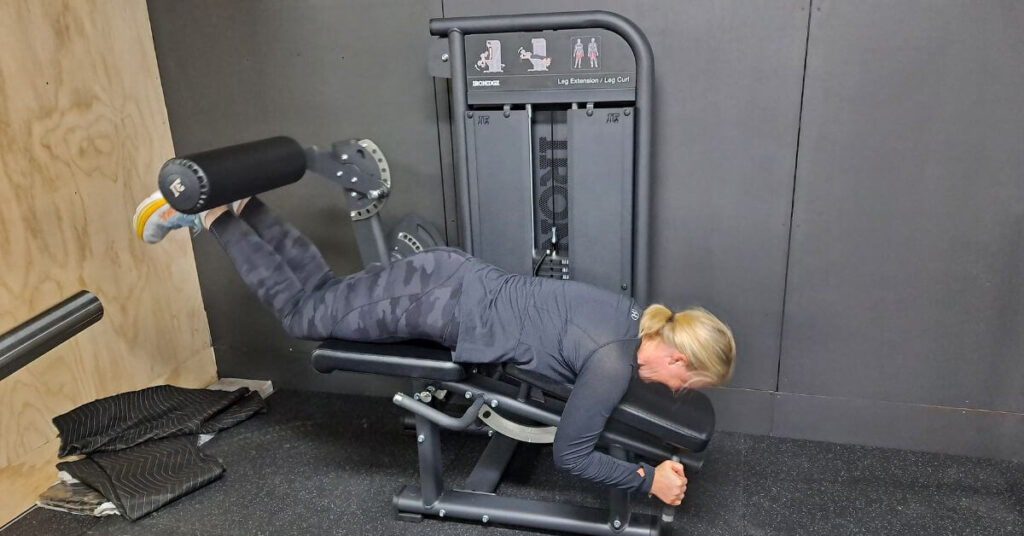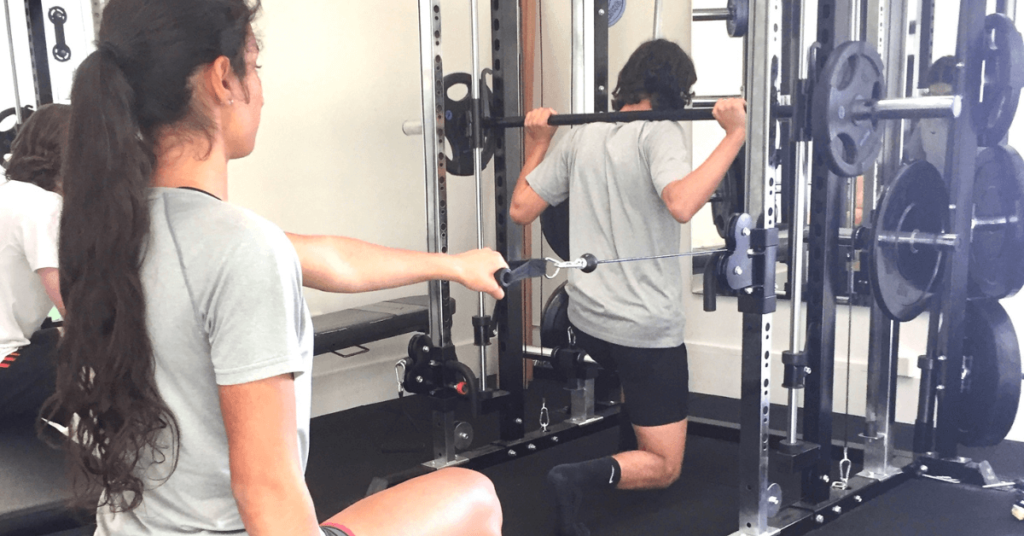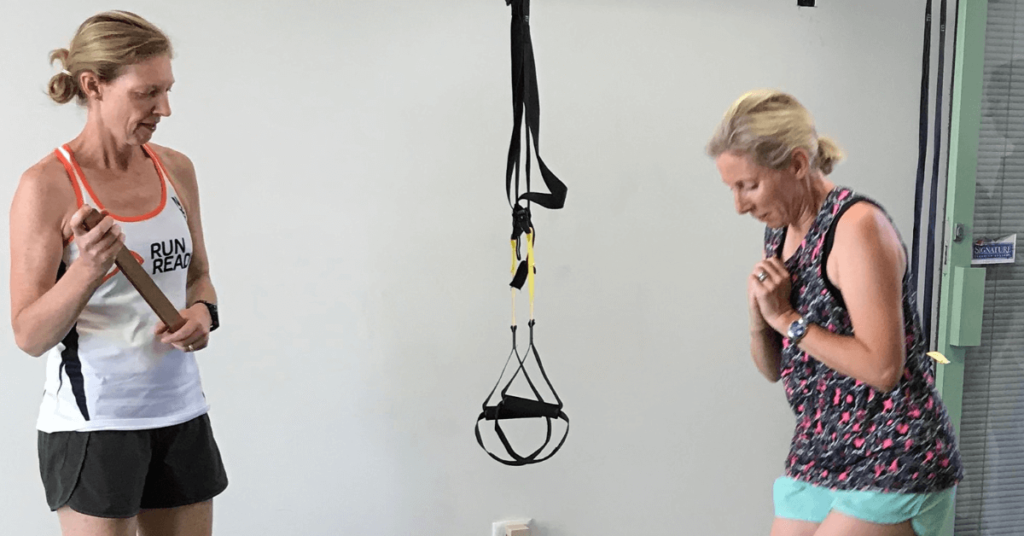5 Myths About Weight and Strength Training for Women
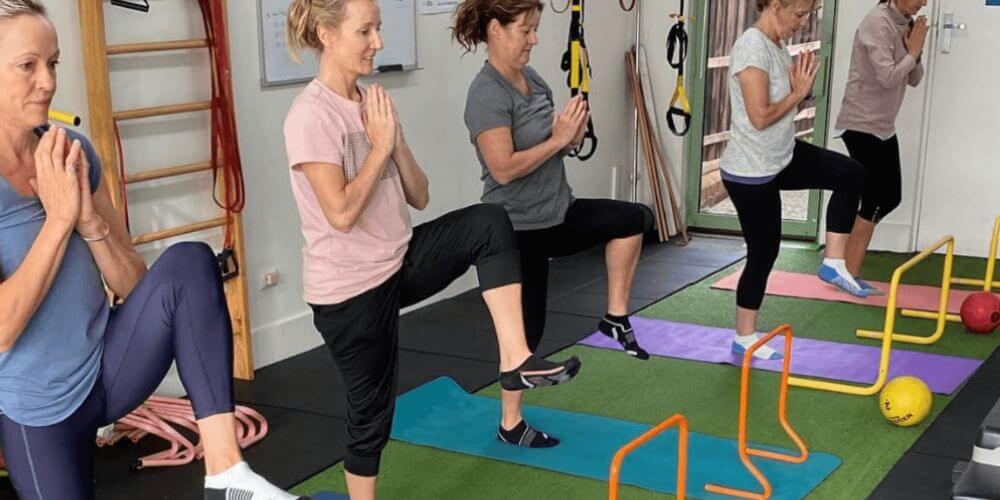
Over a decade of strength training both men and women has shown me the incredible power of weights and strength exercises to transform bodies and confidence, especially for women. But too often, I hear the same tired excuses for refusing strength training based on outdated assumptions, hearsay, and societal pressures. But here’s the truth: I’ve seen thousands of everyday women—mums, nannas, desk warriors—transform. They shed fat, build strength, and feel like superheroes—all thanks to strength and conditioning, regardless of fitness or genes. My goal today is to remove the thin mask of myths that surround strength training for women once and for all. It’s time to ditch the barriers and embrace strength!
Why Women Should Strength Train
Having trained countless women over the years, I’ve seen many women change their lives and bodies through strength and conditioning. Even so, a lot of women get discouraged by the myths that they hear about strength training for women and bulking up. It’s quite a shock to know that there are less than 4 in 10 Australian women who meet national muscle-strengthening guidelines, according to the Australian Institute of Health and Welfare. I find this concerning and have witnessed this play out again and again. So, why should women strength train?
- Keep your muscles strong – Muscle-building isn’t just important for the young ones. In fact, muscle building is more critical as we age because we tend to lose muscle as we grow older. Engaging in strength training helps fortify your muscle and bones and keeps diseases at bay. I remember a 65-year old client I had who refused to lift weights because it would be weird to see an elderly woman have some muscle. I reassured her that women do lack testosterone to transform into bodybuilders and that building muscle would keep her fit, and strong, and make her age even more graceful.
- Take care of your heart – Your heart is a powerhouse, and it deserves the best care. Strength training isn’t just about sculpting muscles; it also contributes to a healthier heart. As you engage in resistance and strength exercises, your cardiovascular system reaps the rewards, leading to improved blood circulation and heart function. Who wouldn’t love a longer and healthier life to spend with loved ones while doing the things we’re passionate about?!
- Maintain a healthy weight – With the great pressure of society on women to always look their best, weight management is probably one of the top concerns of every woman. You’re in luck because high-impact cardio exercises aren’t the only way you can manage your weight. Strength training can become a reliable partner as you lose, gain, or strive to maintain a healthy weight.
- Safeguard your mental health – Think of endorphins, those feel-good chemicals your body releases during exercise. With each lift, rep, and sweat bead, they’re like tiny confetti showers celebrating your effort. Studies show strength training can be as effective as therapy in reducing stress and symptoms of depression. It’s like a mental reset button, a way to unplug and recharge, leaving you feeling more resilient and emotionally stronger.
Can I strength train at home?
Thinking about starting strength training but worried you need a fancy gym and expensive equipment? You’re in for a delightful surprise! The answer is a resounding yes; you can absolutely strength train at home!
From squats to shoulder presses, women can build strength safely using just bodyweight, household items, and affordable gear. Online resources provide free home workout guidance whether you’re a beginner or someone seeking to do more advanced exercises. While specialised gym equipment opens up more exercise options for you, simplicity and consistency remain key—even short, regular training sessions using common household items as makeshift weights will drive progress over time. For optimal results and injury prevention, invest in a few versatile tools like resistance bands, connect with online communities for inspiration, and seek personalised advice from certified strength trainers at Run Ready, whether online or in person. Remember, every small win counts on the empowering path to new strength benchmarks, so embrace the journey with self-compassion. With the right mindset, resources, and consistency, every woman can achieve strength gains from the comfort of their home.
Easy-to-follow Strength Exercises for Women
Now that we know strength training at home is highly possible and also encouraged, let’s dive into the strength exercises you can easily follow and do on your own.
- Squats: Stand with feet shoulder-width apart; engage the core. Send your hips back, bending your knees to 90 degrees. Press your heels back to start. works the legs and glutes.
- Lunges: Step forward with the right foot from standing, lowering until both knees are bent to 90 degrees. Press back up and repeat on the left. This targets the legs, and glutes.
- Push-Ups: From a plank position with hands under shoulders, core braced, lower chest to the floor. Press back to start. This works the chest, arms, and core.
- Tricep Dips: Sit on the edge of a chair. Walk your feet out, and slide your glutes off the edge. Bend your elbows back to the lower body. Straighten your arms to return. This exercise targets the triceps.
- Plank Forearms on the floor: With your shoulder-width apart, your body in a straight line. Engage your core and hold for a couple of seconds. This can strengthen the arms, shoulders, and core.
- Bicep Curls: Stand holding weights at your thighs with your palms forward. Bend the elbows, curling weights up towards the shoulders, then lower them slowly.
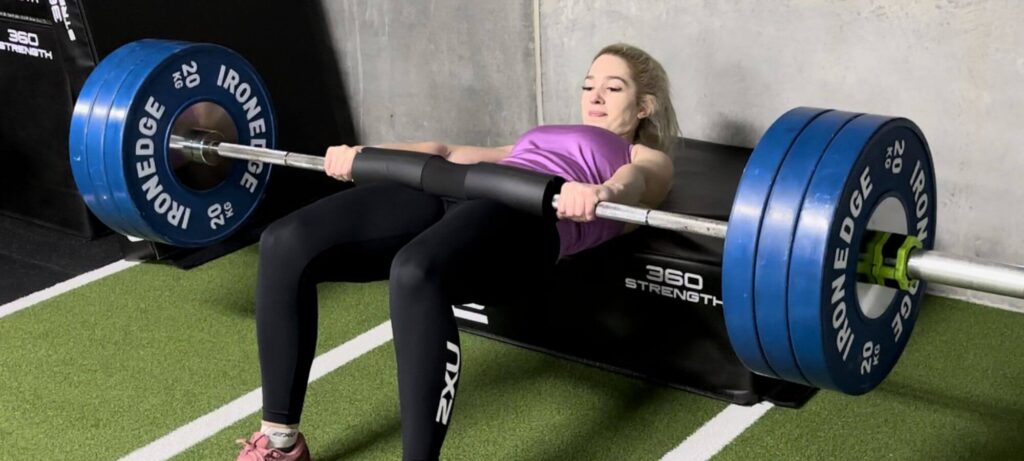
Based on a study done by the Australian Institute of Health and Welfare, a staggering 35% of adults aged 18-64 are insufficiently active, with women (39%) outpacing men (32%), and the gap widening with age (29% vs. 30% at 18-24 to 47% vs. 53% at 65+)
5 Strength Training Myths for Women Debunked
Forget about the fairytale princess rescued by her handsome and muscular prince. This is a story about a woman who was greatly terrified of weights. This client had seriously told me that she was afraid that lifting weights would turn her into a She-Hulk overnight until she met Lily, who was a petite woman who had the most amazing biceps she had ever seen! Lily and I assured her that strength training’s goal wasn’t to bulk up but to sculpt and tone muscle. In between deciding whether to stay sedentary forever or reap the benefits of getting a strength coach, she was constantly troubled by the thought of lifting weights and doing strength workouts because of the misconception that she’d bulk up in a snap! It was then that I realised that a lot of women are still caught up in this web of lies, preventing them from getting a step closer to a healthier life. It’s time to get to the bottom of these popular myths and get women to start strength training!
Myth #1: Bulking Up? Don’t Sweat It!
Many women worry about becoming “bulky” when they lift weights. Don’t sweat it! Studies show women naturally have 10-20 times less testosterone than men, making it significantly harder for us to bulk up like bodybuilders. If you do want to bulk up like a bodybuilder, it will take a huge change in your diet and specialised training to get those muscles pumping. Strength training is a sculpting tool rather than a muscle bulker. Doing regular, balanced, and systematic workouts with the right weights and reps can help you lose fat and shape those muscles hiding underneath all that layer of fat!
Here’s the science: a study published in the Journal of Strength and Conditioning Research found that women lifting weights for 12 weeks lost an average of 5% body fat while gaining 3% muscle mass. That’s a recipe for a leaner, stronger, and more confident you!
Myth #2: Lift Light Weights and Do High Reps
People say that the weight of your weight doesn’t matter. But, they do! Although lifting lighter weights may feel like it’s the safer route to build muscle, it won’t get you the results you desire. Research from the American College of Sports Medicine reveals that women benefit just as much as men from lifting heavier weights (within their capacity, of course). When you use heavier weights, these challenge your muscles more, leading to greater muscle gains and built-up strength. We love how muscles speed up your metabolism, making burning fat a breeze! I talked to Mary, one of my consistent clients, and this is what she told me: “I spent years doing endless sets of light dumbbells, convinced it was the only way for women like me. But my progress plateaued, and I was pushed to challenge myself harder. Hesitantly, I picked up a heavier weight. My muscles screamed in protest, but I pushed through. That feeling of conquering that weight was addictive! My strength skyrocketed, and my body responded in ways I never imagined. Lifting heavy became my secret weapon.”
Myth #3: Lifting Weights is Dangerous
Strength training gets a bad rap for being dangerous, but studies from the National Strength and Conditioning Association (NSCA) show it’s one of the safest forms of exercise when done properly and with the guidance of expert S&C coaches. The key lies in good technique and starting slowly. Learn the correct form for each exercise, progress gradually, and listen to your body.
Myth #4: Pregnant Women Can’t Lift Weights
Contrary to popular belief, strength training during pregnancy isn’t just safe; it’s beneficial! I’ve had many pregnant clients on board our strength and conditioning programs and it’s always a pleasure to hear their stories. According to Shiela, “When I found out I was pregnant, Run Ready became my sanctuary. Ditching the fear-mongering and numerous hearsay about exercising while pregnant, I listened to my body and adapted.. using lighter weights, modified moves, and a supportive community of mamas lifting alongside me. I felt like my baby loved the music and the constant movement, and I felt stronger, more confident, and ready to take on motherhood with my newfound strength.”A study published in the American Journal of Obstetrics and Gynaecology found that pregnant women who lift weights experience reduced back pain, improved mood, and even easier deliveries. It’s always a smart move to listen to your health practitioner and gym coaches when it comes to exercising while pregnant. Don’t lift overly heavy weights, and avoid exercises that place a strain on your abdomen.
Myth #5: Stop Strength Training When You Start Menopause
Elderly women shouldn’t use menopause to ‘pause’ their physical activities and exercises! I have lots of elderly clients who enjoy our strength and conditioning for active women programs at Run Ready. They always tell me that they’ve been feeling their best since they started training! Picking up weights and combining them with strength exercises can help us as we age. Building strength relies on building our muscles and improving our bone density, which can prevent the onset of osteoporosis (which is common among older women) and other cardiovascular-related diseases. Added benefits? A fired-up metabolism, upbeat mental health, and energy levels through the roof! Weight training truly is a silver bullet for feeling and functioning at our best in later years.
Strength Training for Women FAQ
Yes, of course! Your weight shouldn’t stop you from getting to your fitness goals. Weight lifting and strength training are beneficial for people who are overweight. Lifting weights can help you increase your metabolism by increasing muscle and improve your overall bone health. The key point to remember here is that you should always ask for guidance from a seasoned strength and conditioning expert like us at Run Ready.
Protein powders and protein shakes are not a must when you start strength training. Your body is sufficient to build muscle. However, in cases where you aren’t able to meet your daily protein requirements, that’s when a protein powder or shake can help you achieve your balanced diet. If you have decided to supplement your workouts with a protein powder, don’t forget to choose high-quality and reputable protein powders that are void of additives and fillers.
There might be a misconception that when you gain muscle, you automatically lose your woman curves. This is not true! Investing your time and effort in strength and conditioning will help you achieve a more defined and sculpted body.


